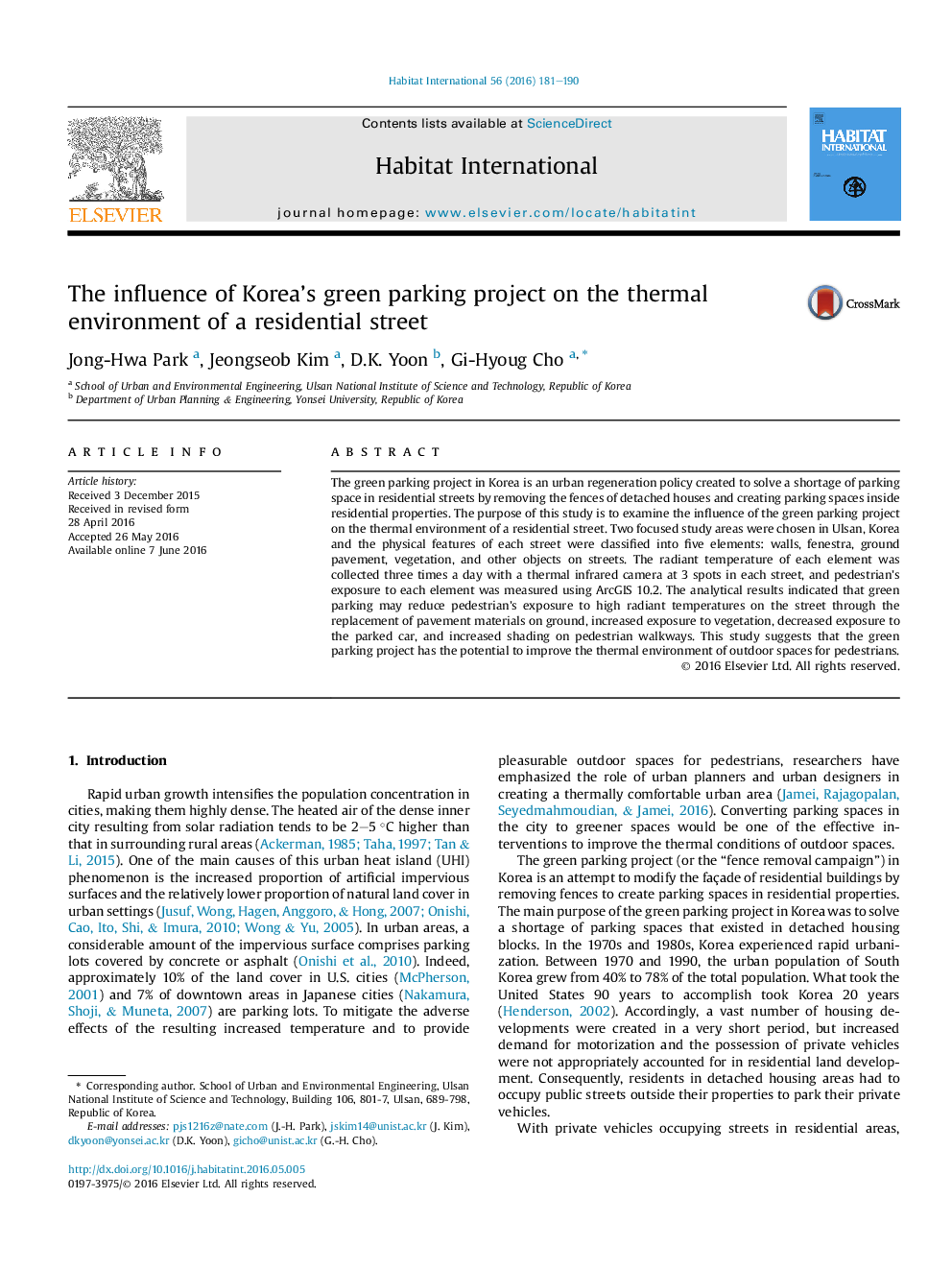| Article ID | Journal | Published Year | Pages | File Type |
|---|---|---|---|---|
| 1047709 | Habitat International | 2016 | 10 Pages |
•The influence of the green parking project on the thermal environment is examined.•The replacement of pavement materials reduces the radiant temperature of the surface.•The project increases pedestrian exposure to vegetated areas on the street.•Pedestrian exposure to elements having a higher radiant temperature decreases.
The green parking project in Korea is an urban regeneration policy created to solve a shortage of parking space in residential streets by removing the fences of detached houses and creating parking spaces inside residential properties. The purpose of this study is to examine the influence of the green parking project on the thermal environment of a residential street. Two focused study areas were chosen in Ulsan, Korea and the physical features of each street were classified into five elements: walls, fenestra, ground pavement, vegetation, and other objects on streets. The radiant temperature of each element was collected three times a day with a thermal infrared camera at 3 spots in each street, and pedestrian's exposure to each element was measured using ArcGIS 10.2. The analytical results indicated that green parking may reduce pedestrian's exposure to high radiant temperatures on the street through the replacement of pavement materials on ground, increased exposure to vegetation, decreased exposure to the parked car, and increased shading on pedestrian walkways. This study suggests that the green parking project has the potential to improve the thermal environment of outdoor spaces for pedestrians.
